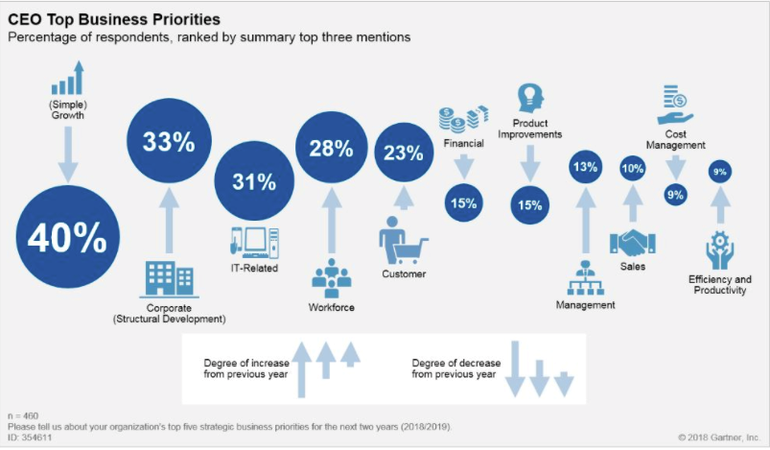Month: June 2020
CEO Satya Nadella said,” We’ve seen two years’ worth of digital transformation in two months. From remote teamwork and learning, to sales and customer service, to critical cloud infrastructure and security—we are working alongside customers every day to help them adapt and stay open for business in a world of remote everything.”
In this pandemic, there is no choice for anyone but to be tech-savvy. Most businesses that were not dependent on technology, have now been forced into adopting technology. This has forced a shift in remote-work policies and workplace hygiene as well as evolved in business-continuity strategies. The one silver lining to this situation is that industries will now understand how smart-technology platforms and digital-transformation tools can help make fool proof business models in the face of such a global crisis.
The impact that technology is having on the society will persist for years to come. The top digital revolutions are work from home, distance education, telehealth, online entertainment leading to reduced bandwidth and retail industry. Here is our perspective on how some of the industries have changed recently.
RETAIL INDUSTRY:
Retailers are now focusing on launching online stores and developing a well-mapped customer journey across various e-commerce websites. Survival of the retail industry calls for its ability to sell, which involves checking the existing business process to find problems and creating a more robust framework. This will improve efficiency and help converge evolving technologies. Thus, improving customer experience.

HEALTH CARE INDUSTRY:
In the health care sector, non-urgent cases are being dealt with using telemedicine as most governments are now insisting on being technology-enabled. Nowadays, patients get better treatment with virtual reality tools, wearable medical devices and mobile technology. Hospitals are using big data to create a customer persona which compiles statistical information on what the prospective patients want and need, and the platforms where one can reach them. Even doctors can now streamline their workflows using artificial intelligence-powered systems.

FINANCIAL INSTITUTIONS:
Most banks still have not adopted cloud-based infrastructure due to security concerns, but this pandemic has driven them to make this their top priority to become resilient. Banks being digitized can see reduced costs and streamlined processes and this end-to-end integration provides a seamless, engaging customer experience. This makes room for further business transformation with new digital technologies like blockchain and artificial intelligence.
Being primarily powered by AI and its related technologies of machine learning and predictive analytics, insurance operations have become faster. Digital transformation is also speeding up customer service, where live chat and digital assistants are helping customers in their most important times of need.
EDUCATION INDUSTRY:
Digital transformation has impacted the education industry and educators are now realising the benefits of technology in classrooms. Education is an industry with antiquated methods and practices, but with the help of digital transformation, teachers have begun making drastic changes to their instructions and assessments at a much faster and smoother rate than expected. New educational technology is helping students learn in a collaborative and interactive manner. Virtual and augmented reality plays a major role in enhancing teachers’ instructions while simultaneously creating lessons that are fun and engaging for students. Thus, teachers are being able to bring the outside world into the classroom.

Today’s pervasive online environment allows exciting possibilities that can educate students on cyber safety as well as individual responsibility. Colleges and universities are starting to create informal campus learning spaces for the students to understand the importance of collaborating and creating whenever possible and not just within classrooms. Artificial intelligence has also become a major tool in higher education. Australia’s Deaken University used IBM Watson to create a virtual student advisory service available every day of the year. In the very first trimester, over 30,000 questions were recorded. Thus, giving actual advisors time to spend on much advanced problems.
GOVERNMENT AGENCIES:
Infrastructure modernisation has become a priority for governments looking to serve citizens in the digital era. Local, state as well as federal government agencies are undergoing digital transformation to help them use the power of the cloud. While, technology can help governments become more effective, the change does not happen overnight. Due to various factors, different government agencies are at various stages of digital transformation and are looking at how they can scale their efforts to fulfil the commitments made to their constituencies.
Executives of various industries are now inspired to use digital advances such as analytics, mobility, and social media to transform businesses. Customer interactions and internal business processes are changing to take over new technological capabilities. Governance is a key determinant in managing digital transformation as it often goes beyond organisational structures to include specific leaders. These new roles include ‘digital czars’ who lead digital transformation at the firm or business level as well as senior liaison roles.

To conclude, in each of the above-mentioned scenarios, the thing in common is to transform organisations into smarter, more proactive, and more energetic entities that are able to cope up with the changes in our behaviour and technology demands. Taking the right steps can help them evaluate what they need to do to harmonize their back-end systems with new digitized capabilities for clients, partners and staff.
” When digital transformation is done right, it is like a caterpillar turning into a butterfly, but when done wrong, all you have is a really fast caterpillar,” rightly said by George Westerman, MIT Sloan Initiative on the Digital Economy.